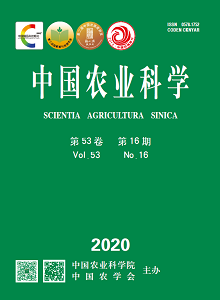【Objective】The objective of this study is to find out the evaluation methods of low-nitrogen-tolerant broomcorn millet varieties, to screen the genotypes and identification indexes, and to provide a theoretical basis for the breeding of the low-nitrogen-tolerant varieties and understanding the physiological mechanism of the tolerance to low nitrogen stress.【Method】In the field experiment, 100 broomcorn millet varieties from domestic and foreign places were used for the treatment of low nitrogen stress (0 pure nitrogen) and normal nitrogen application (150 kg·hm-2 pure nitrogen). Eleven indexes, including nine major agronomic traits (the plant height, stem diameter, number of main-stem nodes, panicle length, straw weight, panicle weight per plant, grain weight per plant, 1000-grain weight and leaf area), nitrogen content and nitrogen absorption were measured for two consecutive years. The low-nitrogen-tolerant index of each indicator was assessed by the method of membership function, and their comprehensive ability of low nitrogen tolerance was evaluated by principal component analysis, regression analysis and cluster analysis.【Result】There were significant differences in all eleven indexes, including plant height, stem diameter, number of main -stem nodes, panicle length, straw weight, panicle weight per plant, grain weight per plant, 1000-grain weight, leaf area, nitrogen content and nitrogen absorption of the tested varieties at different nitrogen levels. Under low nitrogen stress, the growth, biomass accumulation and nitrogen absorption of broomcorn millet were inhibited. The value of each agronomic trait decreased significantly, and the range of variation was reduced. The order of reduction range was that leaf area > straw weight > grain weight per plant > panicle weight per plant > stem diameter > number of main-stem nodes > panicle length > 1000-grain weight > plant height. The nitrogen content and the nitrogen absorption of different broomcorn millet seeds decreased and the decrease range of nitrogen absorption decrease was higher than that of nitrogen content. Under low nitrogen stress, the variation coefficients of plant height, stem diameter, number of main-stem nodes, panicle length, straw weight, panicle weight per plant and grain weight per plant in different broomcorn millet varieties were higher than those of normal nitrogen application levels. Under different nitrogen levels, the variation coefficient of nitrogen absorption in different broomcorn millet seeds was higher than that of nitrogen content. The variation coefficient of nitrogen absorption under low nitrogen stress was higher than that of normal nitrogen application. The principal component analysis was carried out on the low nitrogen tolerance index of 11 indicators, and the five principal components were selected. The cumulative variance contribution rate was 75.83%. The correlation between the low nitrogen tolerance index and the comprehensive evaluation value on the low nitrogen tolerance (D) of seven indicators (the plant height, panicle length, straw weight, panicle weight per plant, grain weight per plant, leaf area, nitrogen absorption) was highly significant. Among them, the correlation of panicle weight per plant, grain weight per plant and nitrogen absorption was higher, with the correlation coefficients 0.858, 0.812 and 0.812, respectively. According to the D-value, 100 varieties of broomcorn millet were classified into three types: Low nitrogen tolerance, intermediate and low nitrogen susceptible.【Conclusion】Through the analysis of the comprehensive characteristics of each trait index, it is concluded that the panicle weight per plant, straw weight, and nitrogen absorption can be used as the first choice for the evaluation of the ability of low nitrogen tolerance. Four varieties of Yumi 3, 2058, Yushu 1 and Yanshu 7 have the strongest tolerance to nitrogen-deficiency.









